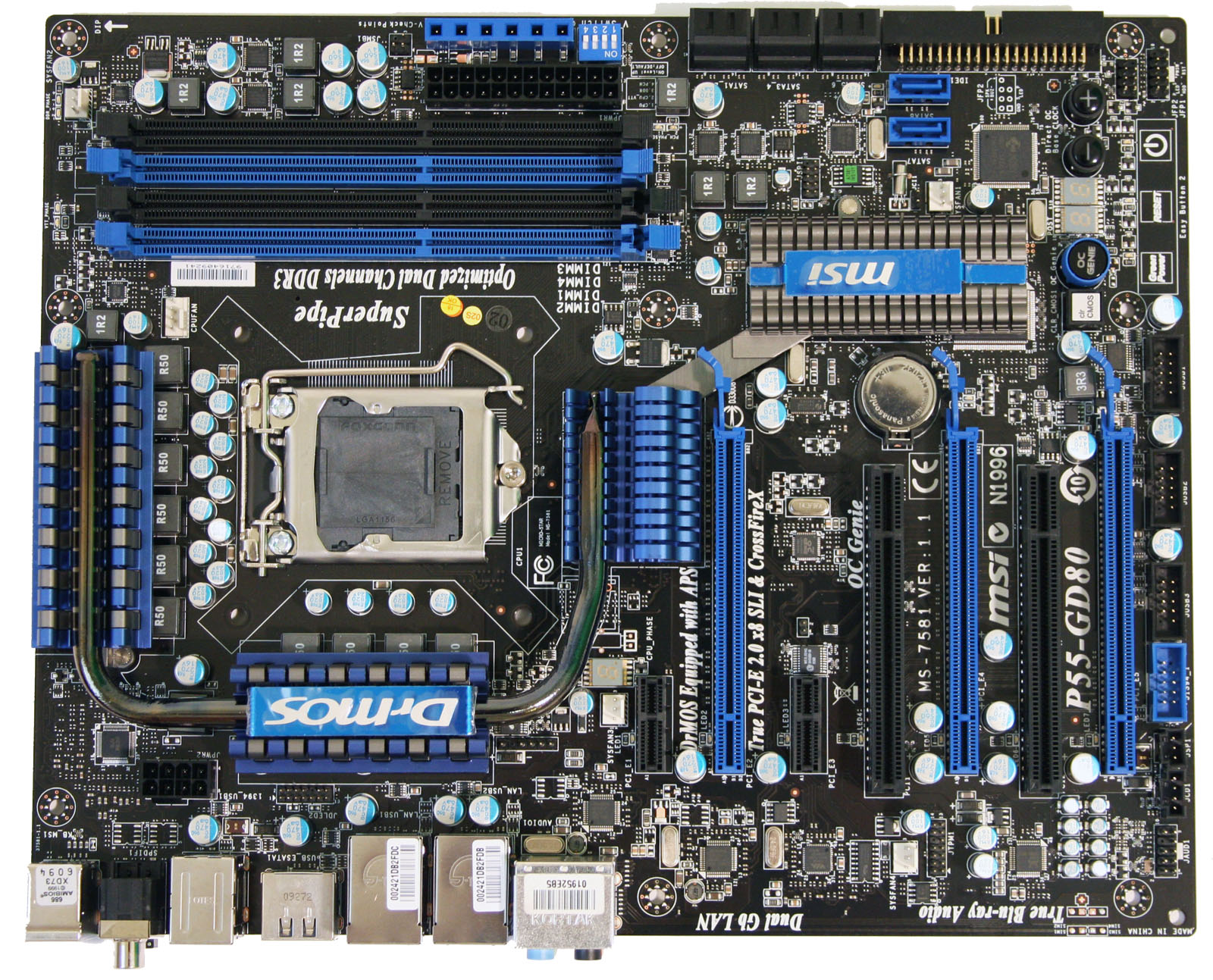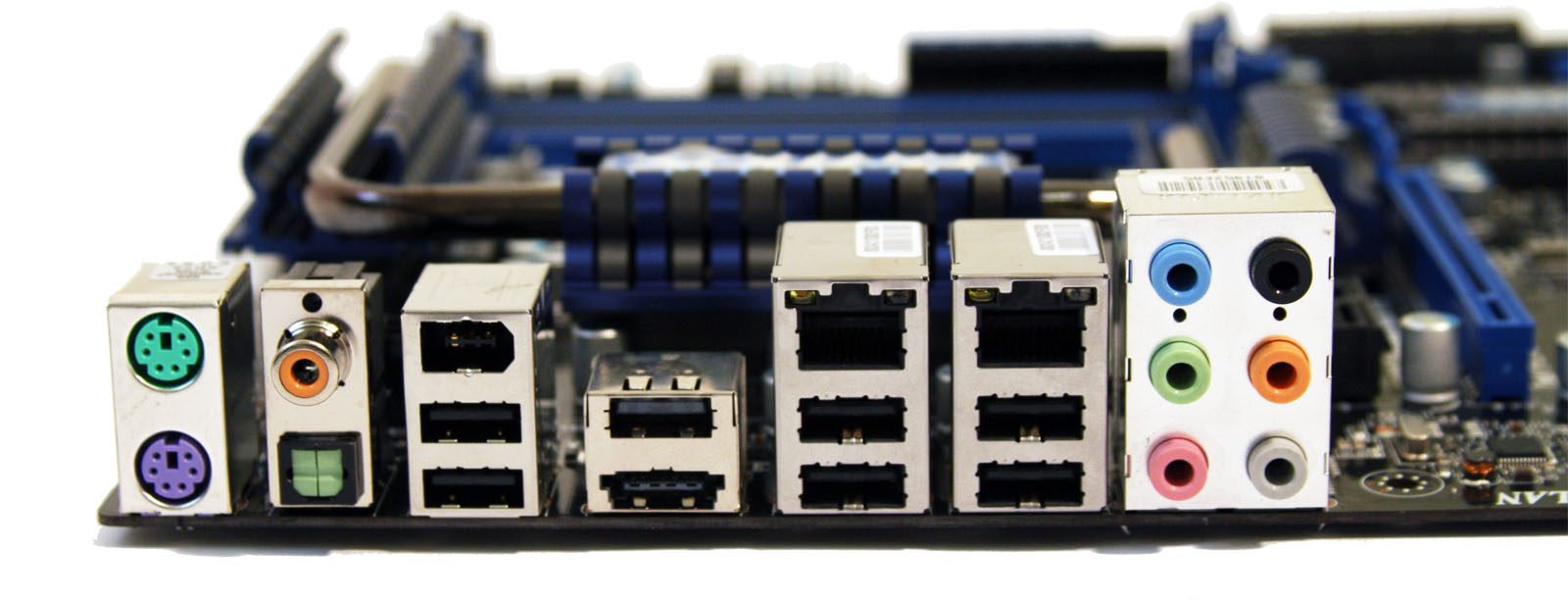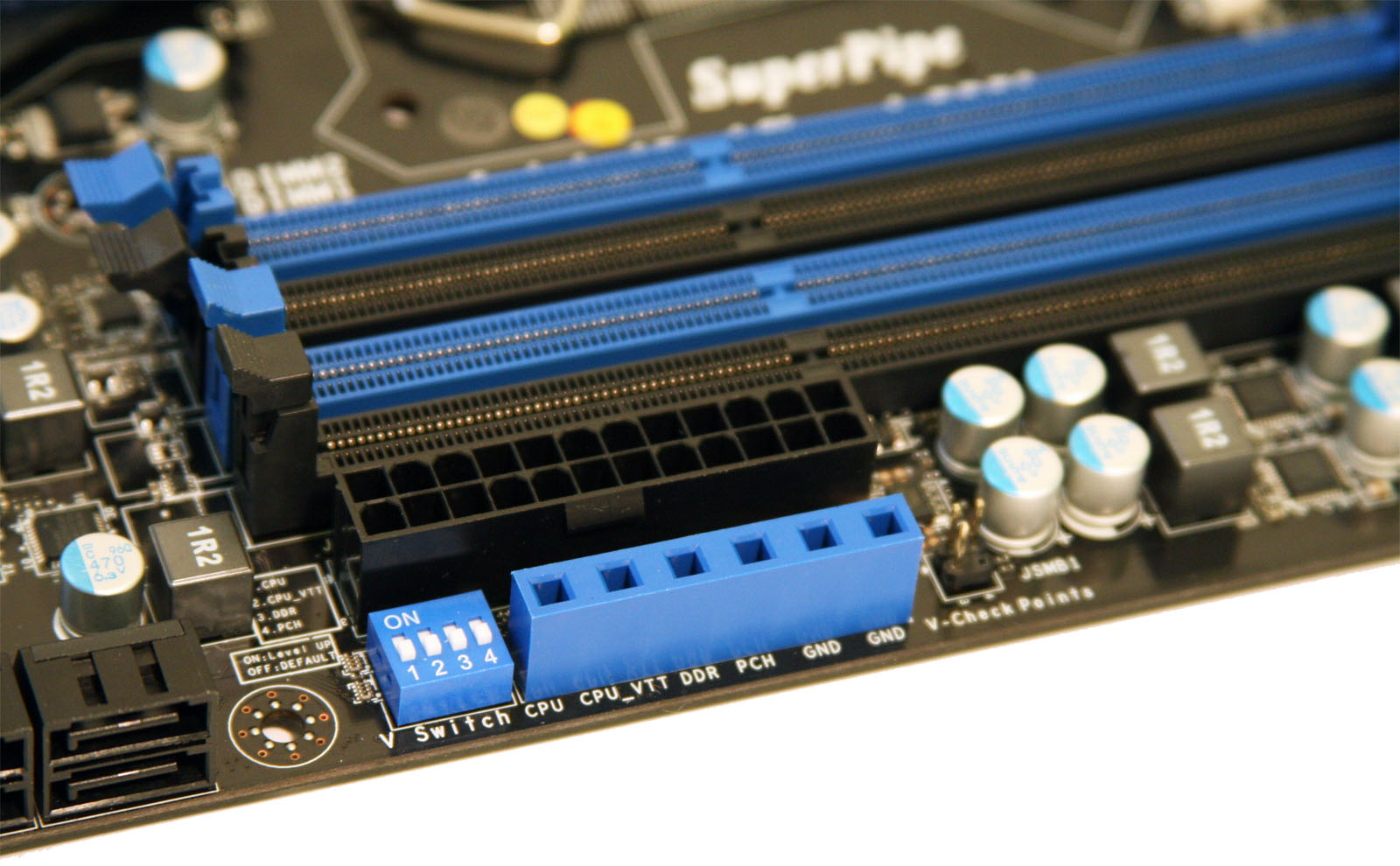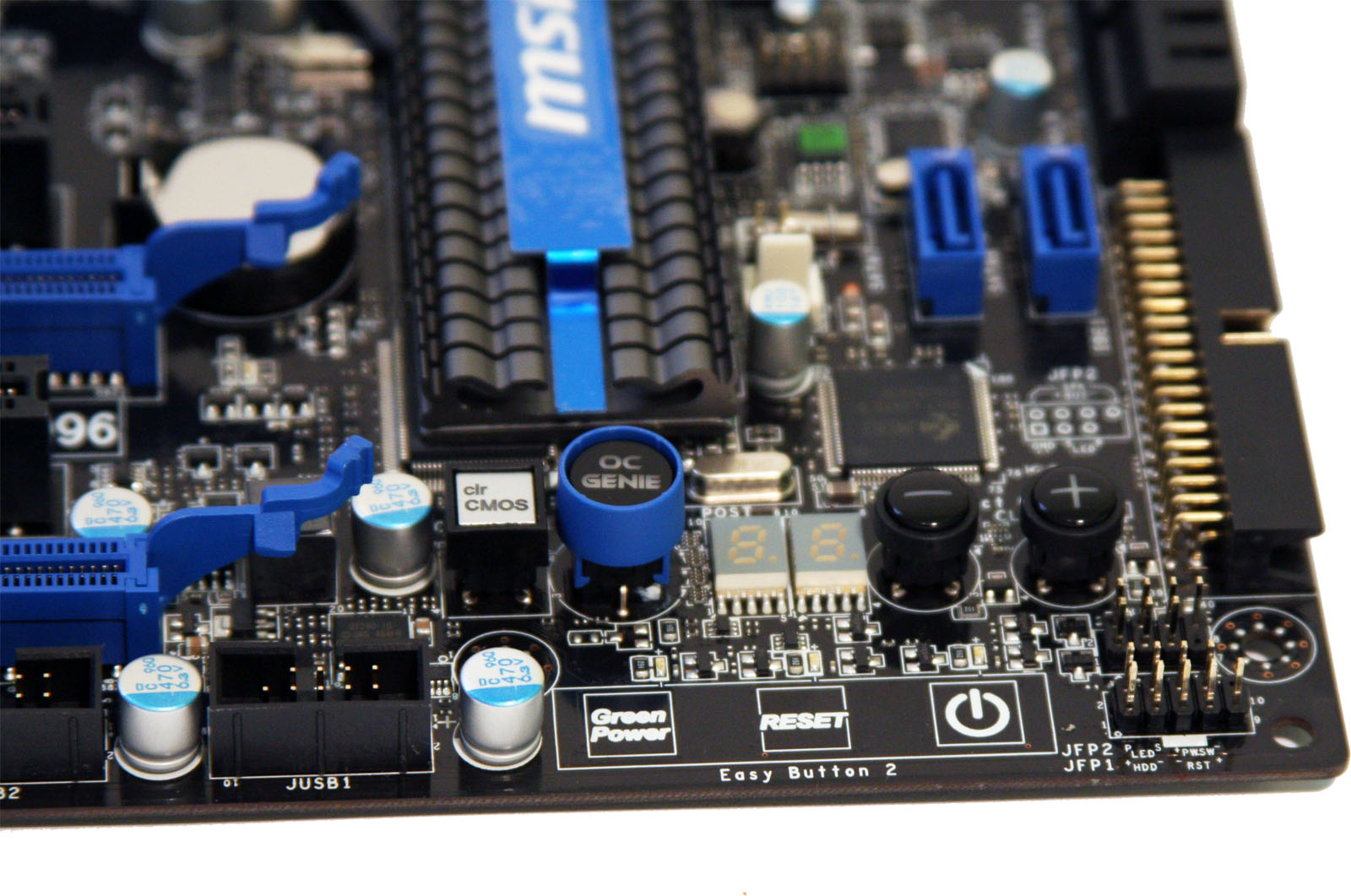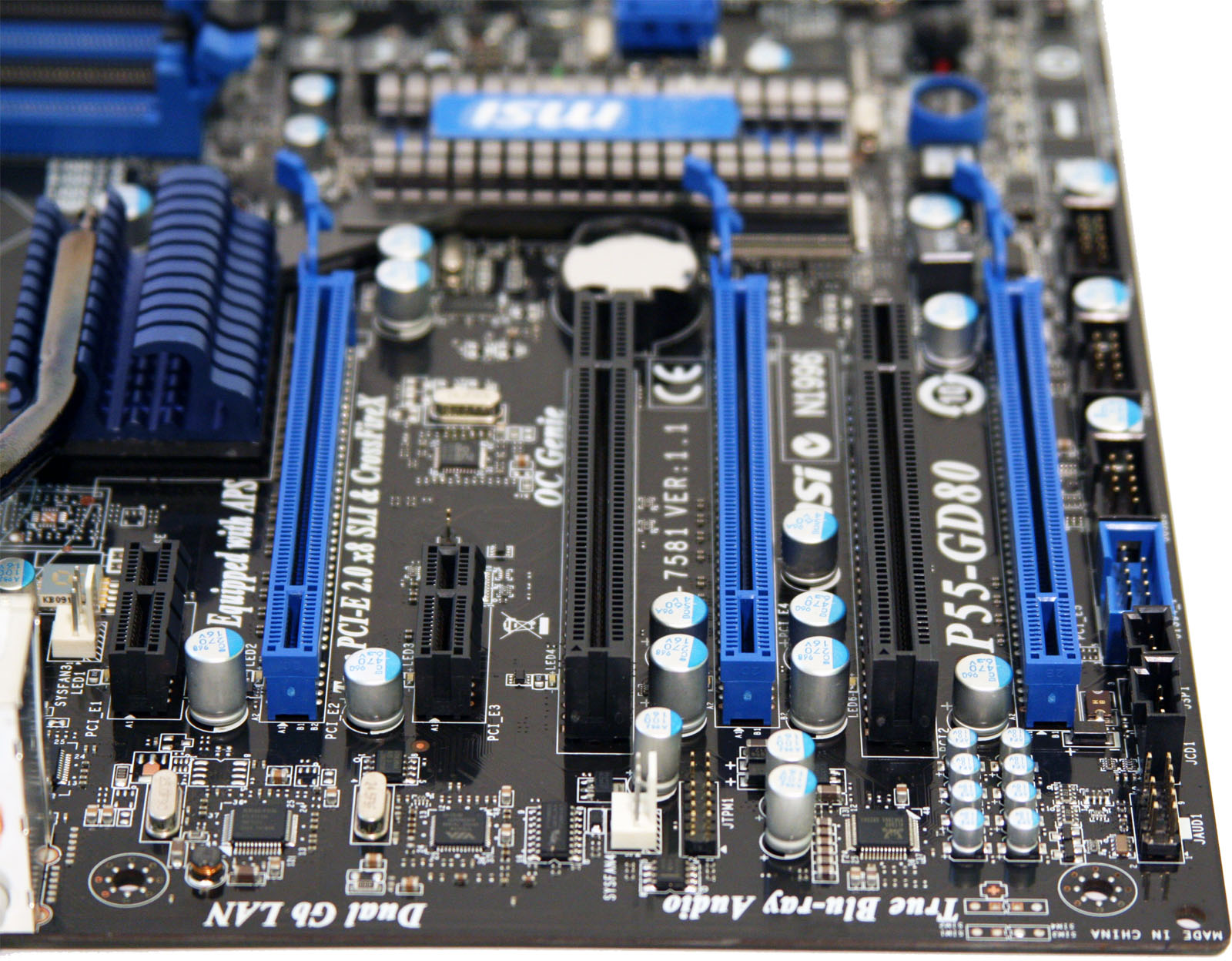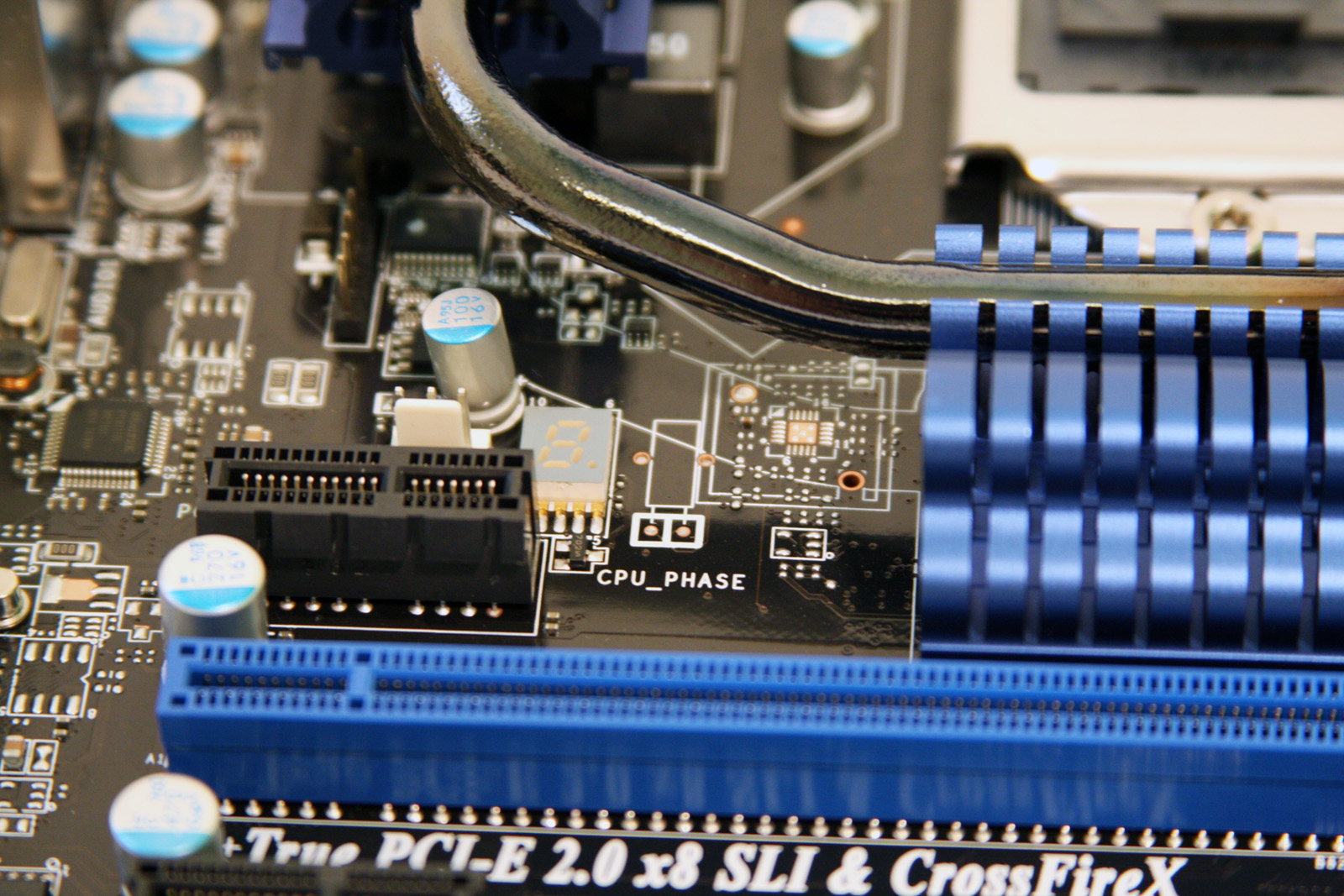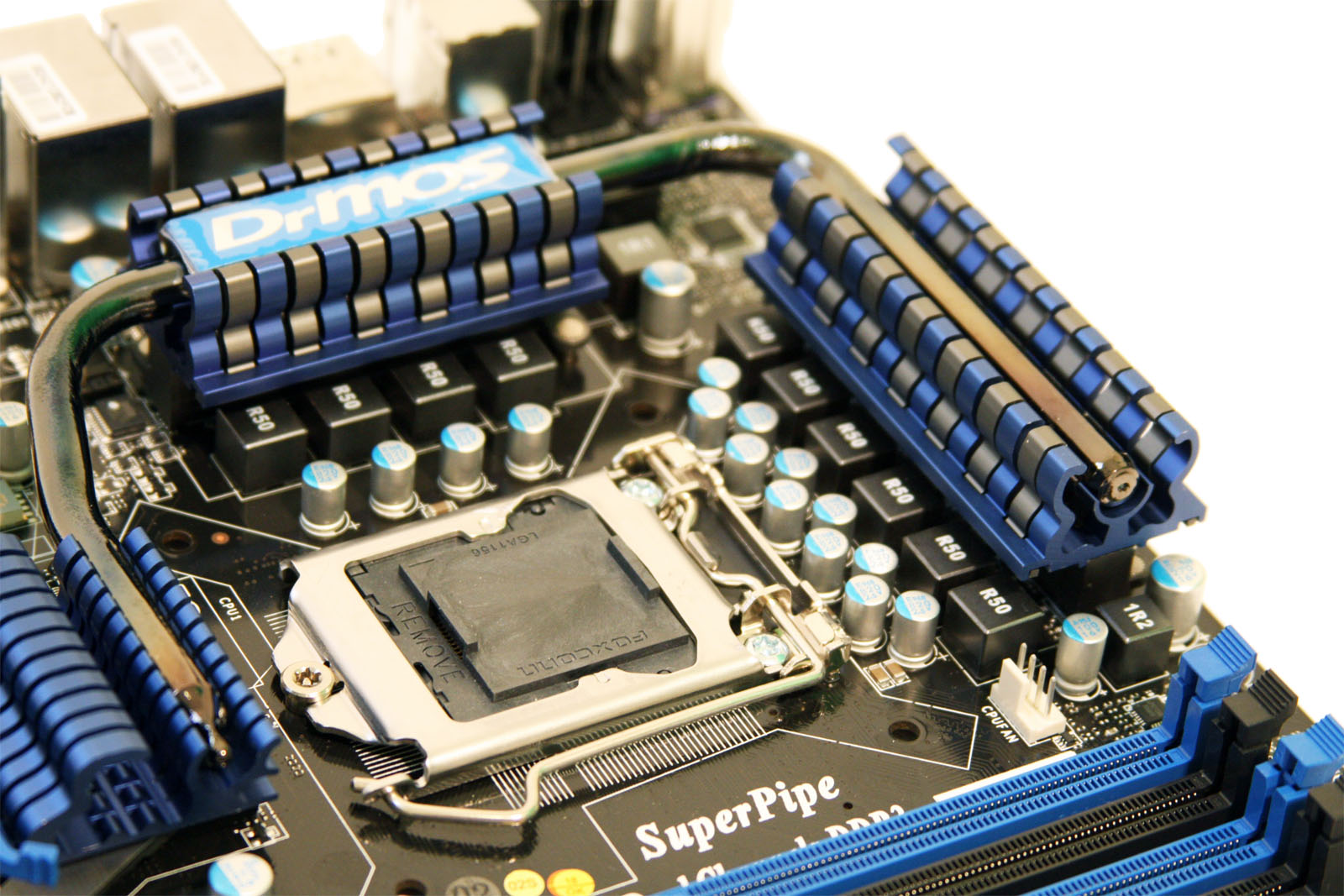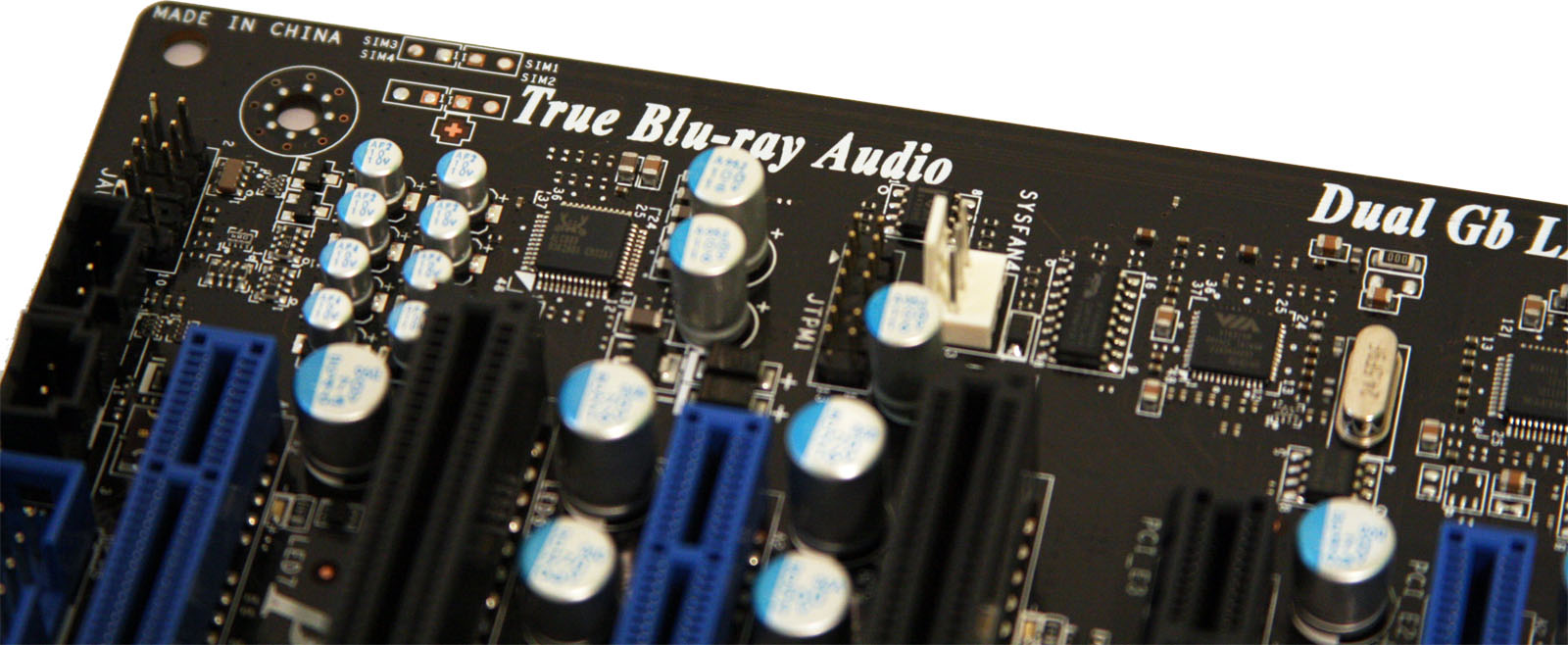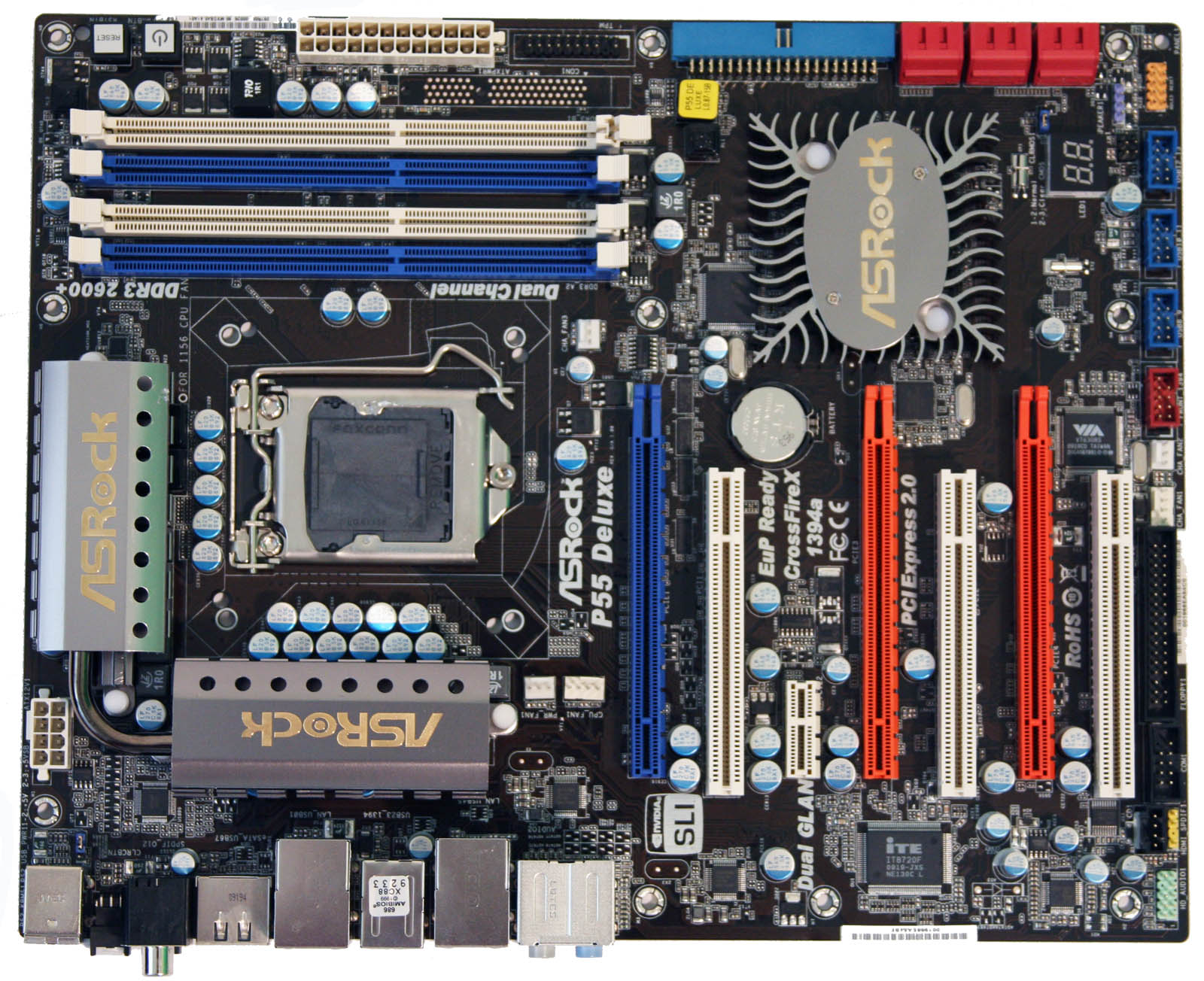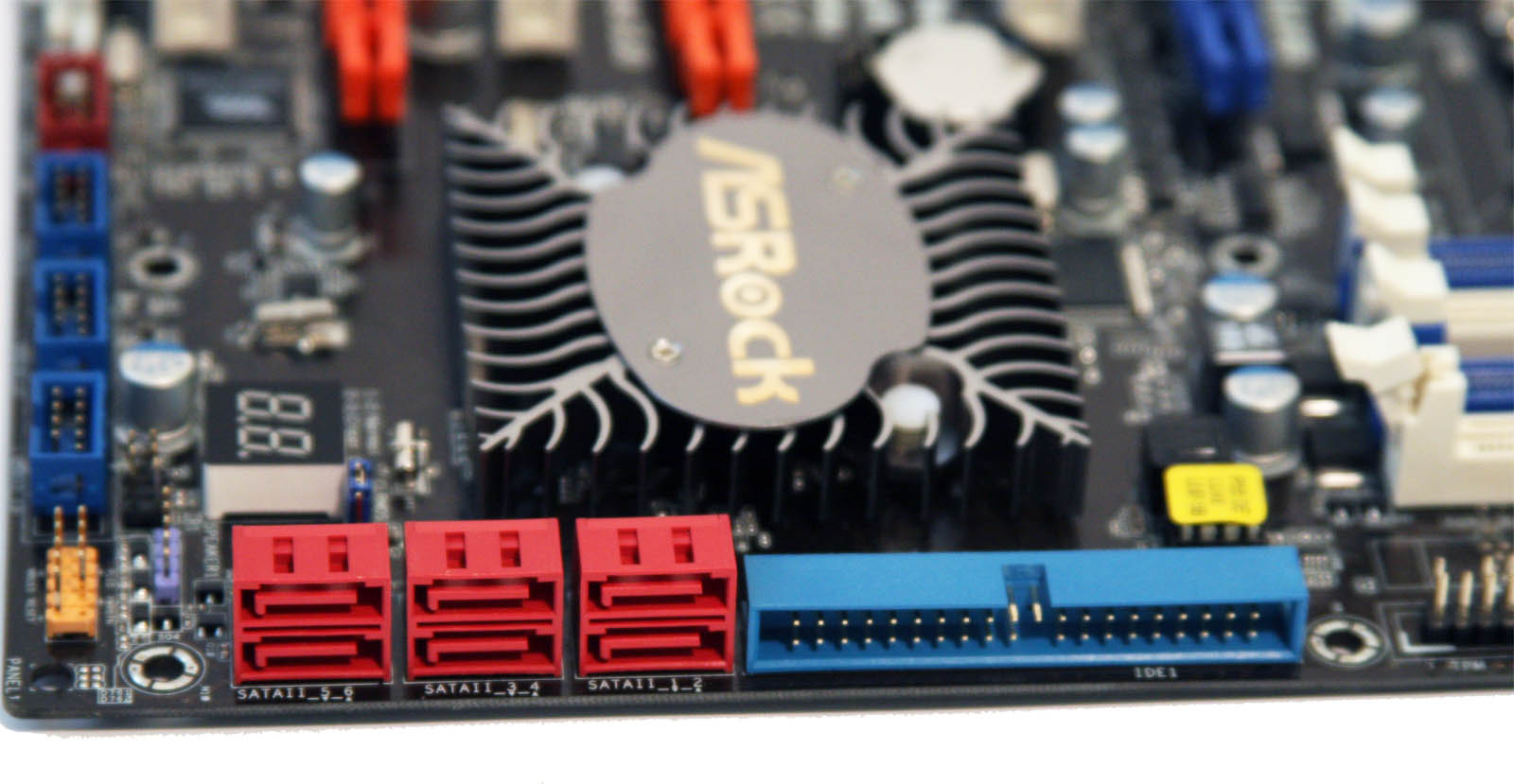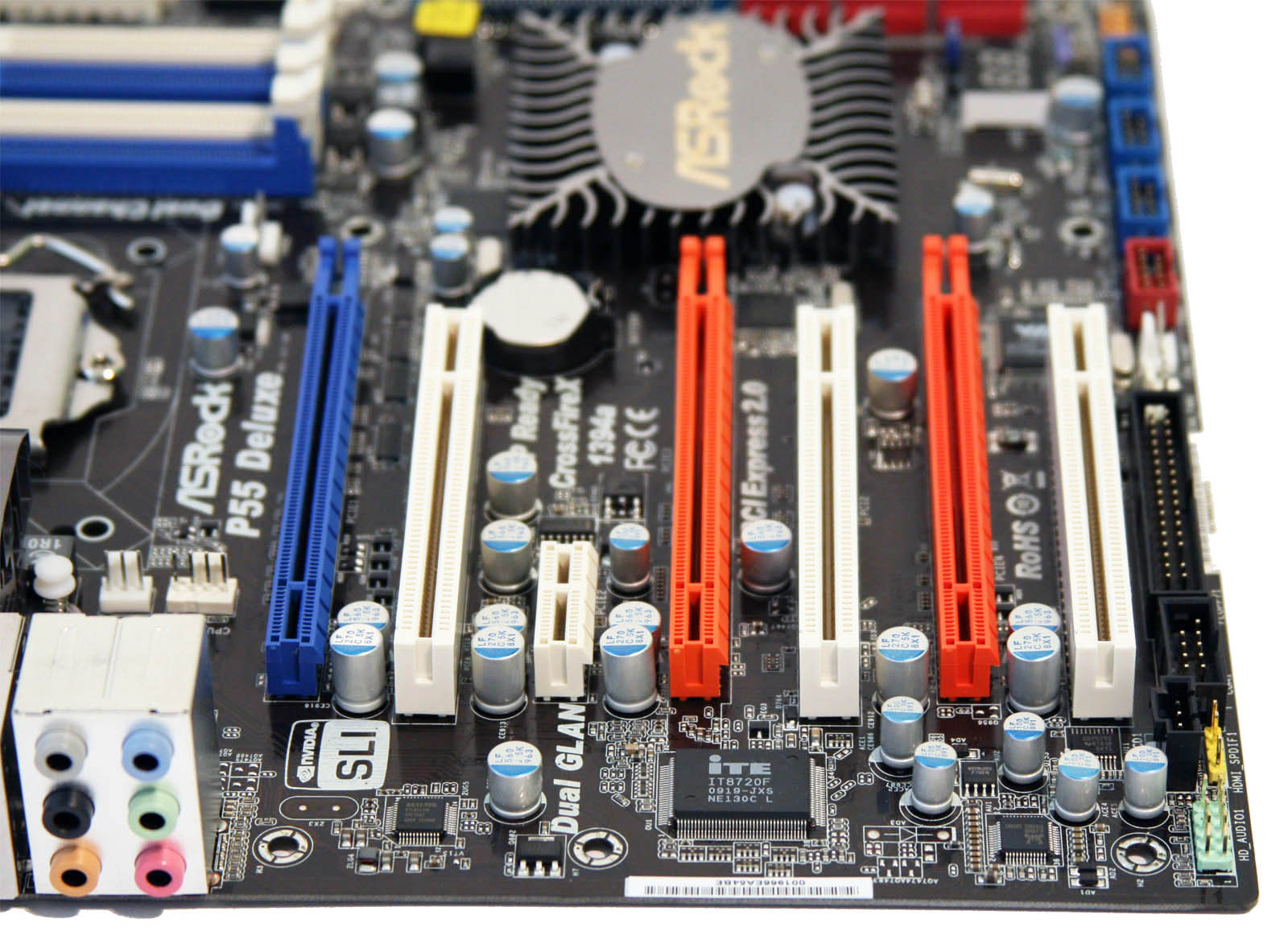One Last Look: ASRock And MSI Preview P55 Motherboards
A Flagship From MSI
Meet MSI's P55-GD80, the company's highest-end P55-based offering, expected to run right around $200. As with many past MSI platforms, this one sports tasteful aesthetic touches, like black and dark blue components, classy, unobstructed cooling on the voltage regulation circuitry, and an oversized anodized-looking heatpipe.
In this preview, we'll explore MSI's flagship in greater depth and then introduce ASRock's upcoming top-end model as well. Representatives from ASRock recently spent the afternoon in our Bakersfield, California lab to talk about P55 plans, pricing, power, and future technologies--I'll give you more detail as we skirt around the company's P55 Deluxe.
But first, let's dive into the P55-GD80, a board we're expecting to be a hit with the overclocking community and will evaluate in greater depth once Intel's upcoming platform officially debuts...
Standard I/O
You'll find no surprises here: two legacy PS/2 ports, coaxial/optical digital audio outputs, FireWire 400, plenty of USB 2.0, eSATA (with a powered USB port), dual Gigabit Ethernet jacks, and analog audio connectivity constitute the board's basic back-panel I/O.
Extras For Overclockers
MSI's V-Check Points facilitate easy readings if you have a multimeter and want to take your own voltage measurements. To the left of that block, you'll find a bank of DIP switches used to unlock more aggressive voltage options in the board's BIOS.
As with most other P55 boards, the P55-GD80 proffers four DDR3 memory slots supporting dual-channel configurations running at speeds as high as 1,333 MT/s. The slots themselves are color-coded to ensure you install modules correctly.
Easy Button And OC Genie
We've actually spent some quality time with MSI's OC Dial feature, which worked well on the company's 790FX-GD70. OC Genie actually handles the overclocking process automatically by altering Bclk settings in the BIOS through a hardware-based IC. More than likely, this is something mainstream folks might be tempted to play with, but we're pretty confident that power users will choose to set their own parameters. Fortunately, two on-board Direct OC buttons facilitate 1 MHz Bclk adjustments in either direction.
Get Tom's Hardware's best news and in-depth reviews, straight to your inbox.
Underneath the Direct OC and OC Genie buttons, you'll find Green Power, reset, and power icons silk screened onto the PCB. Those are actually touch-sensitive buttons that light up when activated, similar to the power button on a PS3. MSI calls the feature Easy Button 2, and we dig it.
P55-GD80 Slot Configuration
With support for CrossFire and SLI, the first two PCI Express x16 slots on MSI's P55-GD80 are tied to the LGA 1156 interface. With one graphics card installed, the top slot gets all 16 of the CPU's available lanes. With two installed, the slots automatically revert to x8/x8. The third x16 slot runs to the P55 PCH and is wired to operate at x4 signaling rates. Bear in mind that if you populate the third slot, neither of the x1 slots will be usable. Why not? Doesn't P55 include eight lanes of PCI Express 2.0? Yes, it does. But MSI's integrated extras (networking/storage) utilize what's left. So, just keep the slot limitations in mind as you plan your upgrade path.
Two standard PCI slots round out expansion on the P55-GD80.
Phase Utilization
Several vendors claim to optimize intricate power circuits, switching phases on and off as needed. MSI's implementation (which centers on a relatively-conservative eight phase hardware design) is complemented by an LCD readout indicating exactly how many power phases are being used at any given time.
Given that the Core i5 and Core i7 processors launching next month are 95W parts, we suspect that MSI's decision to go eight-phase, even when competing vendors are deploying as many as 24, is probably a safe bet. We've already taken a pre-production i5 up past 4.1 GHz on this board without any sort of issue. And we know from discussions with Intel that lower phase counts, designed properly, can be just as effective as more complex solutions.
A Lot Of VR Cooling
MSI covers its MOSFETs with beefy heatsinks and a substantial heatpipe. This cooling circuit, dubbed SuperPipe, is designed to draw heat away from on-board components and move it to less-sensitive areas of the motherboard. The heatsink on the left in the above picture doesn't actually rest on vital core logic. Rather, it's in place to help keep power circuitry cooler. We've seen similar designs from other vendors and questioned the necessity of extra cooling on a cost-conscious design. However, at a sub-$200 price, we're willing to test the effectiveness of SuperPipe when it comes time to round up the higher-end P55 platforms.
Blu-ray Audio?
Most of the features highlighted on MSI's P55-GD80 center on drawing in the enthusiast crowd. However, "True Blu-ray Audio" silk-screened onto the PCB caught our attention, too. So, what does that mean, exactly?
As far as we're able to tell, it's a reference to the integrated Realtek ALC889 audio codec. CyberLink's PowerDVD 9 playback app supports the ALC889 (among four other HD Audio codecs) and offers up to 96 kHz / 24-bit audio playback through eight analog channels. It won't do lossless pass-through, like Asus' Xonar HDAV 1.3, but there is truth to MSI's claim for high-def support if you're using the right playback application and speaker configuration.
A Top-Down Peek At ASRock
No longer the value-only player we once knew, ASRock's P55 Deluxe looks to be a solid entry into the P55 motherboard space. The company's X58 Extreme recently won a Recommended Buy award in our budget X58 motherboard roundup for its performance, overclocking, price, and feature set.
While it's too early to pass judgment on ASRock's first P55-based offering, the board's layout and list of features certainly show promise at its sub-$200 price point.
A recent visit to our Bakersfield, CA office revealed even more detail about the upcoming P55 lineup: ASRock is planning a $149 P55 Extreme, a $119 P55 Pro, and a $109 micro-ATX model. If the Extreme and Pro versions carry over SLI support (they'll have CrossFire for sure), they stand to be compelling options for budget gamers.
A Tale Of Storage...
Ah, the storage saga. Leading up to this P55 launch, almost every motherboard vendor we talked to planned on adding SATA 6 Gb/s connectivity to their boards. The first round of platforms to arrive in our lab actually had Marvell's 6 Gb/s chip on-board. But very quickly, that feature was pulled and the addition of third-gen SATA was called into question for the first round of P55-based motherboards. The rumor was that IDE functionality was problematic, and it'd take a re-spin of the controller to fix. Marvell later came out and confirmed the parallel ATA issues.
Well, now it looks like there will be vendors who integrate 6 Gb/s connectivity right out of the gate, now that the chip has been fixed. ASRock is playing it safe, though, and leaving the controller itself off of its PCB design. Instead, its P55 Deluxe board includes a PCI Express x1 card with Marvell's 88SE9123, two internal SATA ports, and one eSATA port.
We actually applaud this decision. According to Intel storage roadmaps we've seen, "next-gen" SSDs aren't expected until Q2 2010, so the inclusion of 6 Gb/s SATA remains a minor extra at this point. When drives start emerging (assuming they're able to capitalize on the additional throughput), dropping a PCIe card into your P55 platform makes perfect sense.
A Familiar Slot Configuration
This looks like it's going to become one of the most popular slot layouts for P55: three PCI Express x16 slots (one wired for x16, one wired for x8 [both drawing from the CPU's PCIe], and one x4 attached to P55), one PCIe x1 slot, and a handful of PCI slots (in this case, three). This arrangement enables full CrossFire and SLI support across a pair of electrically-x8 slots, plenty of second-gen PCIe expansion, and enough lanes left over for integrated extras like Gigabit Ethernet.
-
dingumf Yea MSI still isn't a respectable company after what I've seen from the TV tuner I bought from them.Reply -
apache_lives dingumfYea MSI still isn't a respectable company after what I've seen from the TV tuner I bought from them.Reply
ever heard of a Geforce4 Ti4200 overheating? or a cd burner that burns once and requires a reboot to work again? dont get me started on how shoddy there products are. -
JeanLuc A Ti4200? That's was launched in 2002, get over it. MSI has some really neat products especially when it comes to motherboards, in fact they currently have the best AM3 board on the market so if there recent success with AMD chipsets can be carried over to Intel chipsets we should see a good range of top quality boards from the launch of P55.Reply -
The_Blood_Raven Ever since the P35 MSI has been making some great boards and their GPUs with the aftermarket cooling work very well.Reply -
viometrix any really good tech enthusiast wouldnt use msi anyways....theyd go with evga, asus, and some supermicro products... msi is just too low end or mainstream for me. being the fact that i ran the rma dept for a computer company i worked for, we had to send msi products back for repair or replacement 5 to 1 versus other products for other manufacturers. so say what you want, i am stating a failure rate that is practical in the industryReply -
origosis I think it makes some sense to put alot of work into the P55 boards. It might make it cost more then the 1366 boards, but people like me like the idea of taking an $80 part and making it run faster then the $600-$900 i7.. Is it possible? I dunno. But if we can spend $200 on a p55 board and spend $50-$200 on an i5 and get it running close to the i7 975... Then that makes sense to have these expensive p55's... a niche? i don't think so. Probably a pretty big crowd these days. Look at how well the AMD's with hidden cores sell.Reply -
apache_lives VioMeTriXany really good tech enthusiast wouldnt use msi anyways....theyd go with evga, asus, and some supermicro products... msi is just too low end or mainstream for me. being the fact that i ran the rma dept for a computer company i worked for, we had to send msi products back for repair or replacement 5 to 1 versus other products for other manufacturers. so say what you want, i am stating a failure rate that is practical in the industryReply
Exactly right and agree there, and reguardless of trolls voting down facts are facts
zipzoomflyhighI've used 6 MSI boards and currently have a MSI HD4850. Never had a problem with any of them.
You either work for MSI or are lucky
zipzoomflyhighYou recommend EVGA, a company that just started making mobo's a couple years ago over MSI, ROFL.
ROFL @ MSI being recomended
As for ASUS - I must have sold atleast 1000 P5GC-MX, P5GC-MX/1333, P5KPL-CM and P5KPL-AMPS over the last few years and only seen ~5 with any issues, for a budget motherboard there second to none, and have a decent Intel chipset. -
meatwad53186 JeanLucA Ti4200? That's was launched in 2002, get over it. MSI has some really neat products especially when it comes to motherboards, in fact they currently have the best AM3 board on the market so if there recent success with AMD chipsets can be carried over to Intel chipsets we should see a good range of top quality boards from the launch of P55.Reply
Lol @ "MSI" having the best AM3 board. I'm sure it's not a horrible board, especially for the price, but when a Crosshair III can be had for $35 more or the M4A79T Deluxe for $24 more, why would you even consider the GD70?
